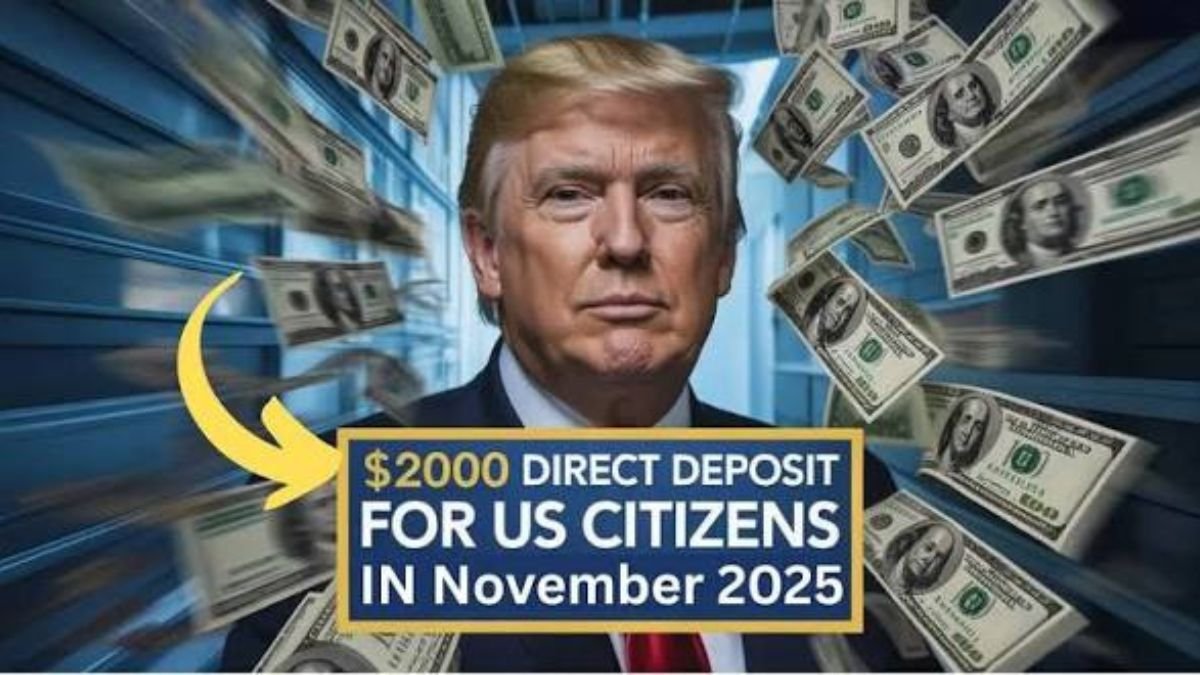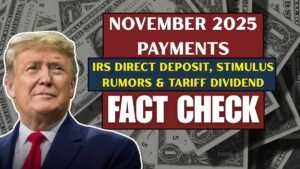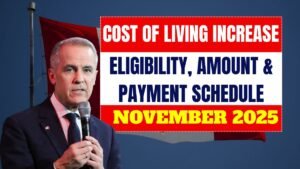The US government is preparing to send $2,000 direct deposits to citizens in November 2025. This financial assistance is designed for millions of Americans struggling with rising inflation, soaring rent prices, expensive healthcare, and rising everyday expenses. This payment will provide relief similar to previous stimulus payments, but this time it is part of a comprehensive federal relief plan aimed at stabilizing household economies across the country and boosting economic activity.
For many families, senior citizens, veterans, and low-income individuals, this payment will be a boon. This amount will prove extremely helpful in managing their monthly budgets amid rising living costs.
What is the $2,000 Direct Deposit Program?
The $2,000 Direct Deposit Program is specifically designed to provide relief to economically vulnerable and affected citizens. The US economy has improved in many areas, but the prices of fuel, healthcare, rent, and food remain unaffordable for many families.
This one-time federal payment will help citizens meet their essential needs, avoiding debt or paying additional interest.
Government officials have also clarified that this amount will be completely tax-free. This means it will not be taxed, nor will the payment affect Social Security, Medicare, or other federal benefits.
It is intended to help those who need it most—especially retired citizens, veterans, working families, and those with limited incomes.
Who is eligible for this $2,000 payment?
To receive the $2,000 direct deposit, citizens must meet certain key eligibility criteria. The entire process is based on their income, tax returns, and participation in government programs.
The most important requirements are as follows:
You
- Must be a U.S. citizen or legal resident
- Must have a valid SSN or TIN
- Must have filed a 2023 or 2024 federal tax return
(However, SSI, SSDI, VA, or RRB beneficiaries are not required to do this because their data is already in the government system)
Eligibility limits based on income:
- Annual income for single filers: Up to $75,000
- Married couples (joint filing): Up to $150,000
- Head of household: Up to $112,500
People with income above these limits may also be eligible for payments, but they will receive a lower amount because the payments gradually phase out.
Beneficiaries of federal programs such as SSI, SSDI, VA, and RRB do not need to do anything in this process. They will receive payments directly into the bank account on their record.
When and how will they receive payments? – Official Schedule
The IRS has released a clear payment timeline for November 2025 to ensure citizens receive their funds on time. Payments will be sent in batches to avoid overloading servers and banking systems.
The payment schedule will be as follows:
Direct Deposit
- November 10 to 29, 2025
- Residents who have opted for direct deposit with the IRS will receive funds directly into their bank accounts.
Paper Checks
- Paper checks will be sent to those without bank details beginning November 25, 2025.
- Delivery times may vary depending on the postal service.
Federal Program Beneficiaries
- Social Security, VA, and RRB beneficiaries
- Payments will be automatically sent between November 14 and November 21, 2025.
Residents will be able to view live information on their payment status, payment method, and estimated arrival date using the IRS’s “Get My Payment” portal.
What to do to avoid payment delays?
Payments are often delayed due to errors in bank details or addresses. In such cases, citizens should take these steps:
- Keep your bank and address information up-to-date with the IRS or Social Security Administration.
- Update your details immediately if you change banks or open new accounts.
- Track your payments on the official IRS portal to ensure any issues are resolved promptly.
All these steps will ensure smooth payment delivery and avoid unnecessary delays.
Why is this $2,000 payment important?
In today’s times, when rent, healthcare, fuel, food, and other daily necessities are becoming increasingly expensive, this payment will provide significant relief to American families.
This amount will help citizens:
- pay monthly bills,
- manage medical expenses,
- pay rent,
- purchase essential food items,
- and meet other essential expenses.
The government has digitized all processes to make this payment the simplest and most transparent. Directly transferring payments into bank accounts not only saves time but also reduces the likelihood of fraud and errors.
Conclusion – The November 2025 $2,000 payment is a relief measure for millions of citizens.
This $2,000 direct deposit in November 2025 is a ray of hope for millions of Americans. This payment will not only strengthen their financial security but also help them overcome the burden of rising inflation.
The tracking tools, automated payment features, and simplified processes issued by the government demonstrate that this plan is being implemented with complete transparency and efficiency.
FAQs
1. What is the $2000 direct deposit program?
A. It is a one-time federal payment aimed at helping Americans manage rising living costs in November 2025.
2. Who is eligible for the $2000 payment?
A. U.S. citizens or legal residents with valid SSN/TIN who meet income limits and filed 2023 or 2024 taxes.
3. Will high-income earners get the payment?
A. Yes, but they will receive a reduced amount due to phase-out limits.



